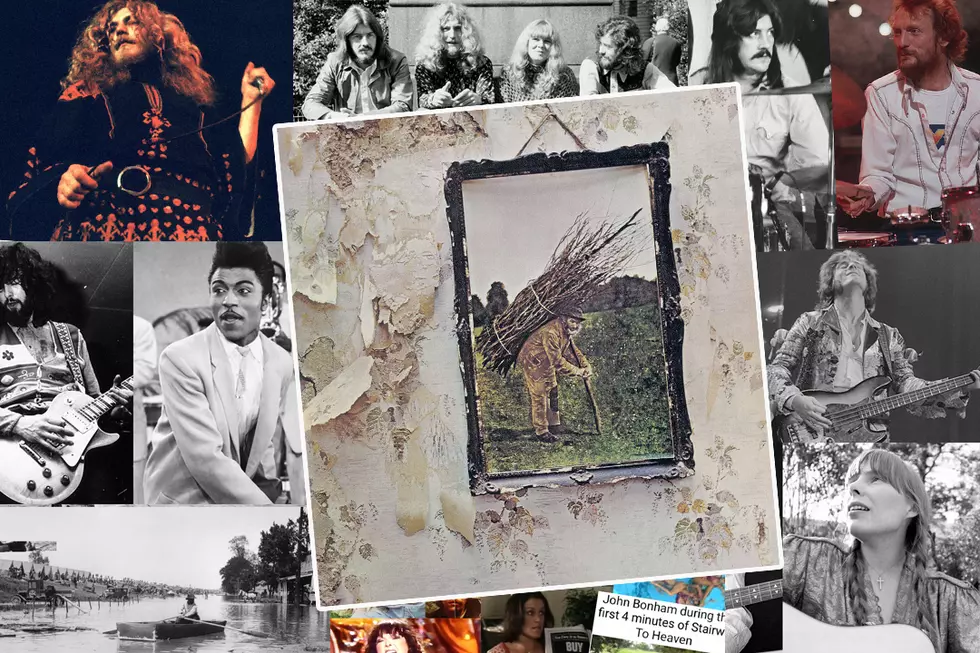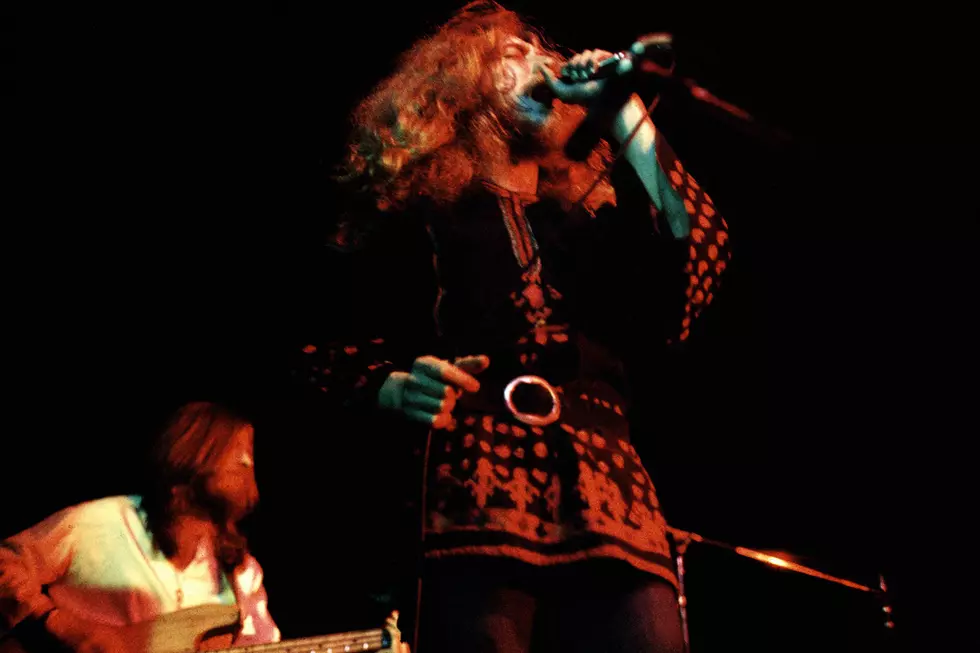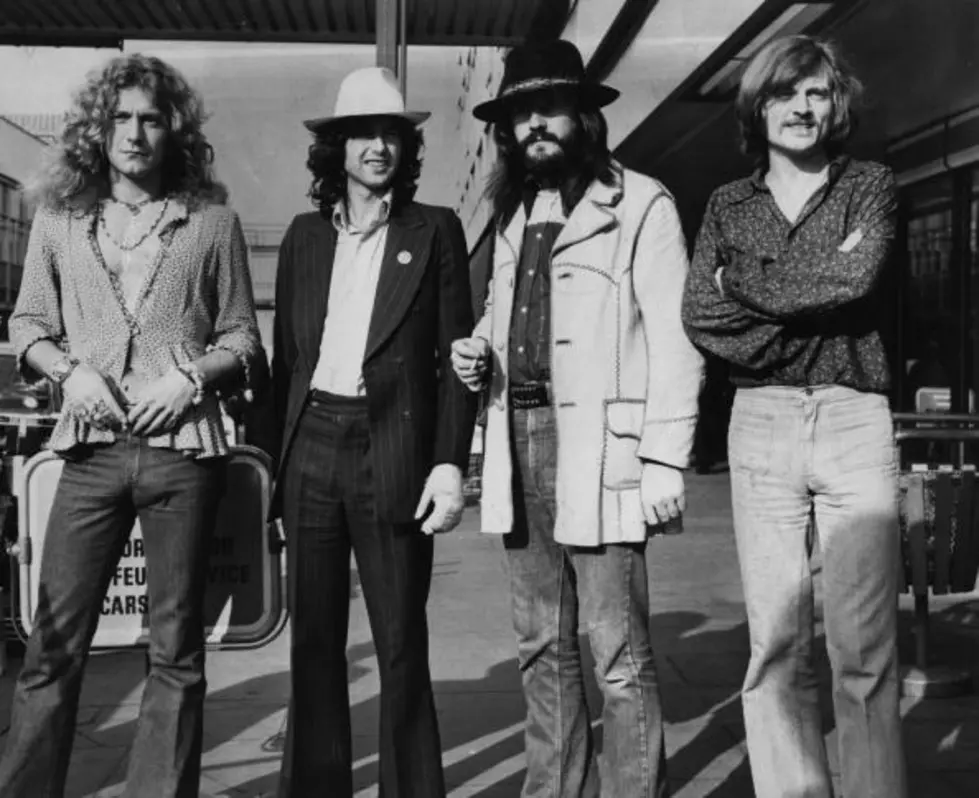
‘Led Zeppelin IV': The Story Behind Every Song
Led Zeppelin’s untitled fourth album - colloquially known as Led Zeppelin IV - launched the band to the upper stratosphere of rock acts.
Everything that made Led Zeppelin one of the greatest groups in history was assembled within the LP’s eight tracks. Heavy metal, folk, classic rock ‘n’ roll and blues - all of the band’s various genres of choice were melded into the songs. Coupled with deeper experimentation in terms of structure and recording technique, the material offered an unprecedented dynamic in music at the time.
The album was recorded at Headley Grange, a largely derelict East Hampshire-based Victorian building, with the Rolling Stones' mobile studio utilized to capture the work. There, Robert Plant, Jimmy Page, John Paul Jones and John Bonham crafted the most ambitious work of their career.
Released Nov. 8, 1971, Led Zeppelin IV would become the best-selling release in the band’s catalog, with more than 35 million copies sold across the world. The critical and commercial success remains one of the most celebrated LPs in history, hailed among rock’s true masterpieces.
We offer a track-by-track guide to Led Zeppelin’s untitled fourth LP below, with links to more detailed stories for each song.
“Black Dog”
The opening track on Led Zeppelin IV was built around a complex riff written by the band’s bassist, John Paul Jones. “I wanted to try an electric blues with a rolling bass part, but it couldn’t be too simple,” Jones recalled. “I wanted it to turn back on itself.” The shifting time signatures proved difficult to work with, a challenge especially tough for drummer John Bonham, who was tasked with laying down a backbone groove to support the song’s dynamic riff. Robert Plant’s distinctive howls tied the track together. Or, as the singer once put it, his vocals took “Black Dog” “from a riff and [made] it into a piece of music — more constructed, more as a working piece so we could all sort of play it.”
Read more: How John Paul Jones Sparked Led Zeppelin’s ‘Tricky’ ‘Black Dog’
“Rock and Roll”
All four members of Led Zeppelin had a devoted appreciation of American music, with no artist looming larger than Little Richard. While recording the song “Four Sticks” for Led Zeppelin IV, the band members found themselves struggling. In an effort to recalibrate things a little, Bonham started playing an impromptu version of Little Richard’s “Keep a Knockin'.” The rest of the band soon joined in, each musician adding musical ideas to the jam. It quickly became clear they were onto something. Lyrics inspired by ‘50s rock ‘n’ roll pioneer were added, Rolling Stones keyboardist Ian Stewart contributed additional layers and the result would become one of Led Zeppelin’s most iconic tracks.
Read more: How a Little Richard Songs Inspired Led Zeppelin’s ‘Rock and Roll’
“The Battle of Evermore”
The third track on IV delivered the only vocal duet in Led Zeppelin’s catalog. “The Battle of Evermore” featured folk singer-songwriter Sandy Denny of Fairport Convention engaging in an interplay with Plant, but the song wasn't originally planned that way. When Plant conceived this epic tune about good vs. evil, he’d initially imagined singing both vocal parts. But considering the differing nature of each set of lyrics, the idea didn’t work. Plant admitted that the vocals "didn't sound right in one voice, one pitch" and ultimately recruited Denny to give “The Battle of Evermore” a clearer dynamic. Musically, the track was buoyed by Page’s intricate mandolin parts, even though he had never picked up the instrument before.
Read more: Why Led Zeppelin Added a Second Singer for ‘The Battle of Evermore”
“Stairway to Heaven”
It’s become one of the most iconic songs in rock history, and while Led Zeppelin couldn’t possibly have imagined how impactful “Stairway to Heaven” would become, they admittedly tried to create something epic. "The idea was to have a song which would actually change as we went through it," Page explained, noting the track featured movements similar to a classical piece. "Layers would unfold with the instruments as they were coming in, and the drums would be coming in later as the song progressed, and there'd be this movement to the guitar solo that took you through, and the momentum would unfold as the pace accelerated.” All these years later, “Stairway to Heaven” holds a permanent place in pop culture, influencing movies, TV shows and sports routines, and even surviving accusations of hidden satanic messaging.
Read more: Led Zeppelin’s ‘Stairway to Heaven’: The Epic’s Ongoing Influence
“Misty Mountain Hop”
Led Zeppelin embraced their flower-power side on “Misty Mountain Hop.” The track was inspired by a real-life protest that took place in London's Hyde Park in July 1968, where the crowd rallied in support of the legalization of marijuana. Plant was sure to mix in the influence of his favorite author, J.R.R. Tolkien, as well. “Misty Mountain Hop” was described by one critic as "dated flower-child gibberish," an opinion Plant took umbrage with. "The essence of the whole trip was the desire for peace and tranquility, and an idyllic situation," the singer told Rolling Stone in 1975. "That's all anybody could ever want. So, how could it be 'dated flower-child gibberish'? If it is, then I'll just carry on being a dated flower child."
Read more: When Led Zeppelin’s ‘Misty Mountain Hop’ Took Hippies to Tolkien
“Four Sticks”
Another song that proved problematic due to the complexity of its changing time signatures, “Four Sticks” stretched Led Zeppelin creatively. Mixing Eastern influences and never-before-used playing techniques, the band created one of its most distinctive tracks. Still, the breakthrough moment came not in the studio but in the audience for someone else’s performance: a highly publicized drum battle between Ginger Baker and jazz legend Elvin Jones. Bonham watched the battle enthralled and was inspired by what he witnessed. The next day, Bonham went into the studio, picked up two sets of drumsticks — inspiring the title "Four Sticks" — and proceeded to record his breathtaking parts.
Read more: How Ginger Baker Inspired Led Zeppelin’s ‘Four Sticks’
“Going to California”
"When you're in love with Joni Mitchell you've really got to write about it now and again." That’s how Robert Plant memorably summed up the inspiration for “Going to California.” While Led Zeppelin’s music was a far cry from Mitchell’s folk-rock style, Plant and Page were outspoken fans of the singer-songwriter. Even so, Led Zeppelin weren't embraced by the Laurel Canyon crowd when they visited the Golden State. Their experience as outcasts from that group of artists, coupled with Plant’s own memories of “struggling to find myself in the midst of all the craziness of California,” also contributed to the song.
Read more: How Led Zeppelin’s ‘Going to California’ Crushed on Joni Mitchell
“When the Levee Breaks”
The final song on IV, “When the Levee Breaks,” was originally written in 1929, inspired by the Great Mississippi Flood, and recorded by Delta blues artists Kansas Joe McCoy and Memphis Minnie. Led Zeppelin felt an affinity toward the song and built upon the original composition. Plant added new lyrics, Bonham recorded his drums in a hallway to get the exact atmosphere he wanted and the band shifted the pace to an intoxicating trance. "If you slow things down, it makes everything sound so much thicker," Page later explained. The track’s saturated sound helped cement its place in rock history.
Read more: The Real Disaster Behind Led Zeppelin’s ‘When the Levee Breaks’
Led Zeppelin Albums Ranked
More From 105.7 The Hawk








